Survey Guided Leadership Development
By Bruce Griffiths M.S.
A leadership truth underscored by the pandemic is Dr. Warren Bennis’s famous quote “Leadership is about relationships.” Managing for efficiency is still important, but emotional intelligence leadership competencies like Relationship Building and Communicativeness have rocketed to the top in our new WFH world.
With much face-to-face training and coaching still on hold, leader training has faced a challenge. But one technique has not missed a beat during the pandemic: survey guided leadership development, using a 360° survey to diagnose a leader’s strengths and opportunities. Multi-rater (360°) surveys (soliciting competency ratings and comments from boss, peers and direct reports) have been around for decades. And because they are now typically done online, debriefed remotely and can also be coached through ZOOM they continued without hesitation during COVID. At OSI we continue to support a number of coaches and organizations involved in 360°’s. Here’s a consensus from them on best practice for this methodology:
1. Think of the 360° survey process as part of a larger leadership development system; it’s one piece in a larger puzzle that includes selection, performance management, career planning, succession management, and promotion.
2. Establish a strictly developmental purpose for your 360° survey. Using it for ANY other purpose (selection, promotion, performance appraisal) politicizes and compromises its use.
3. Begin with the end in mind. Use a valid relevant competency model to define the ideal state.
4. Use a psychometrically robust measurement tool, i.e., 360° survey that has been tested for reliability and validity. Demand to see a test manual.
5. Because 360°’s may have sharp edges, and often contain powerful feedback, use certified/experienced practitioners and coaches to administer feedback and coach participants. This is NOT the kind of feedback tool you can Google and use ad lib.
6. Vet your participants and process to ensure a good ROI; here are four questions you can ask:
- Are you open to change? Do you really want to improve?
- Have you arranged a really robust diagnosis with a valid competency model and reliable measurement?
- Are you ready to filter your results into just one or two areas of opportunity? And really identify and clarify why it’s important to gain knowledge/skill in any deficient competencies?
- Will you commit to executing a robust development plan?
In our experience probably only an assessment center can top a well done 360° survey diagnosis, feedback, and action planning cycle in terms of impact and incitement to change. This is especially true if the 360° survey is paired with a personality instrument like the Myers Briggs. This combination of how you show up at work (360° survey performance feedback on relevant competencies) and who you are (personality profile) provides an exceptional diagnosis you can trust to specify strengths and opportunities. The 80/20 rule applies; only 20% of a participant’s energy should focus on the diagnosis, the remaining 80% should be spent on understanding, owning and acting on the results. Just taking an Xray isn’t enough; it must be interpreted, understood, and if needed, acted upon. We are a strong believer in formal development plans and here’s a link to an OSI document that’s proven helpful in highlighting the power of a formal plan as well as what might be included (Power of a Development Plan PDF).
For further questions on exploring a survey guided leadership development program please contact Crystal Matsuura at OSI by email at cmatsuura@orgsysint.com or phone at 858.455.0923.
Thanks, and enjoy the rest of your summer!


